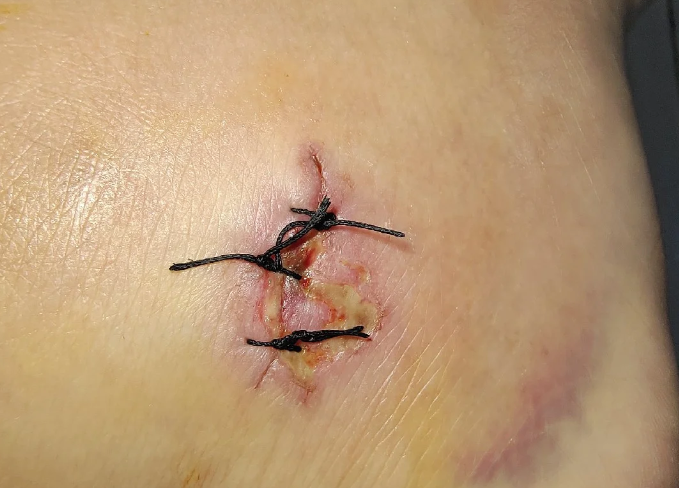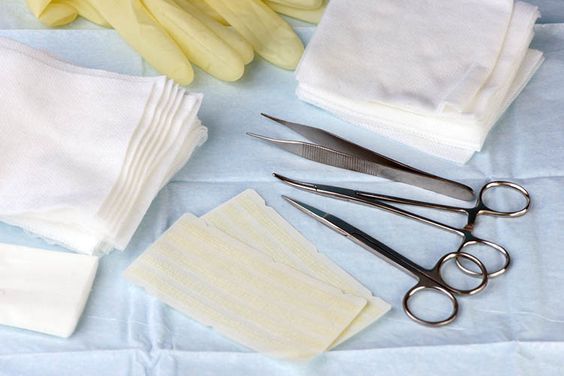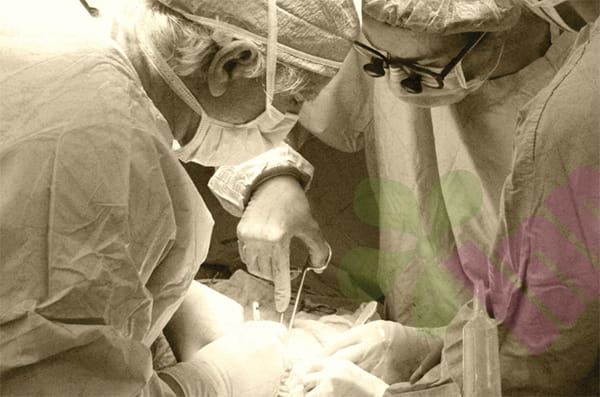When you are expecting recovery after surgery or your wound is gradually closing after a bump, you may suddenly find that the sutures have broken and the wound has opened again, bleeding or even exposing the deeper tissues. This kind of wound opening is enough to cause considerable anxiety for both the patient and his family. It is not uncommon and often occurs in the early postoperative period or after an accidental trauma. The causes are varied but not unmanageable.

The core reason for wound dehiscence is the weakening of the wound's own healing ability or the destruction of external forces. Infection is the primary enemy: bacterial growth not only consumes the nutrients needed for wound repair, but the toxins and enzymes it produces will directly dissolve the fragile new tissue, making it difficult for the wound edge to firmly combine. Secondly, excessive local tension in the wound is another common culprit: coughing, straining to defecate, and other actions that increase abdominal pressure, or too frequent movement of joints, will continue to pull the wound edge, especially where the sutures were not tight enough or the tissue edema was obvious. In addition, the patient's own nutritional status is also crucial. When key nutrients such as protein, vitamin C, and zinc are severely deficient, the body's ability to synthesize collagen is greatly reduced, and the wound is naturally difficult to heal. Certain diseases, such as poorly controlled diabetes and long-term use of hormone drugs or immunosuppressants, can also significantly delay the wound healing process and increase the risk of dehiscence. Premature removal of sutures after surgery or flaws in the suture technique itself are also potential causes.
Once you find that the wound has split, it is crucial to remain calm!
The first step is cleaning and protection: immediately cover the wound with clean gauze or dressings to avoid contamination. If there is obvious bleeding, apply moderate pressure outside the covering to stop the bleeding, but do not stuff the wound at will.
The second step is preliminary assessment and treatment: If the rupture is small, shallow, with no active bleeding and no obvious signs of infection, you can try to carefully rinse the wound with saline, and then use a hydrocolloid bandage to gently align and fix the edges of the ruptured skin (only for very superficial ruptures). However, if the rupture is large, deep into the fat or muscle layer, there is active bleeding, there are signs of infection, or the internal tissue of the wound is exposed, it is absolutely forbidden to handle it yourself! You must go to the hospital emergency room or contact the surgeon as soon as possible. The doctor will decide on the treatment plan based on the specific situation of the rupture: if the rupture is early, the infection is controllable, and the tissue is healthy, it may be completely cleaned and re-sutured; if there is infection or severe tissue edema, it may be chosen to open the wound for drainage and dressing change, and consider secondary suture or let it heal naturally after the infection is controlled and the granulation tissue grows healthily. Daily care after treatment is also critical: be sure to strictly follow the doctor's instructions for changing the dressing and keep the wound clean and dry; avoid strenuous activities or actions that increase abdominal pressure; increase nutritional intake, especially pay attention to high-quality protein and foods rich in vitamin C and zinc; if the doctor prescribes antibiotics, be sure to take them on time and in the right amount to complete the course of treatment.
The key to preventing wound dehiscence is to eliminate controllable risk factors. Balanced nutrition before and after surgery is the basic guarantee; strictly follow the doctor's orders to limit activities, especially in the early postoperative period, avoid coughing hard, use your hands to protect the wound, avoid lifting heavy objects, and keep bowel movements smooth; effectively control underlying diseases such as blood sugar levels; keep wound dressings clean and dry, and return to the hospital on time for reexamination and stitch removal; for wounds with greater tension (such as joints and abdomen), it is also helpful to use abdominal bands, braces, etc. as recommended by doctors to provide external support and protection.

Although wound dehiscence is frustrating, timely and scientific treatment can minimize the impact. For minor superficial dehiscence, you can carefully try to use butterfly tape to close and protect it, but in most cases, especially for deep dehiscence, bleeding, infection, or tissue exposure, please be sure to seek professional medical help and never take risks on your own. Actively cooperate with treatment and care. For more information on Innomed®Hydrocolloid Dressing Ultra-thin, refer to the Previous Articles. If you have customized needs, you are welcome to contact us; You Wholeheartedly. At longterm medical, we transform this data by Innovating and Developing Products that Make Life easier for those who need loving care.
Editor: kiki Jia

 English
English عربى
عربى Español
Español русский
русский 中文简体
中文简体








